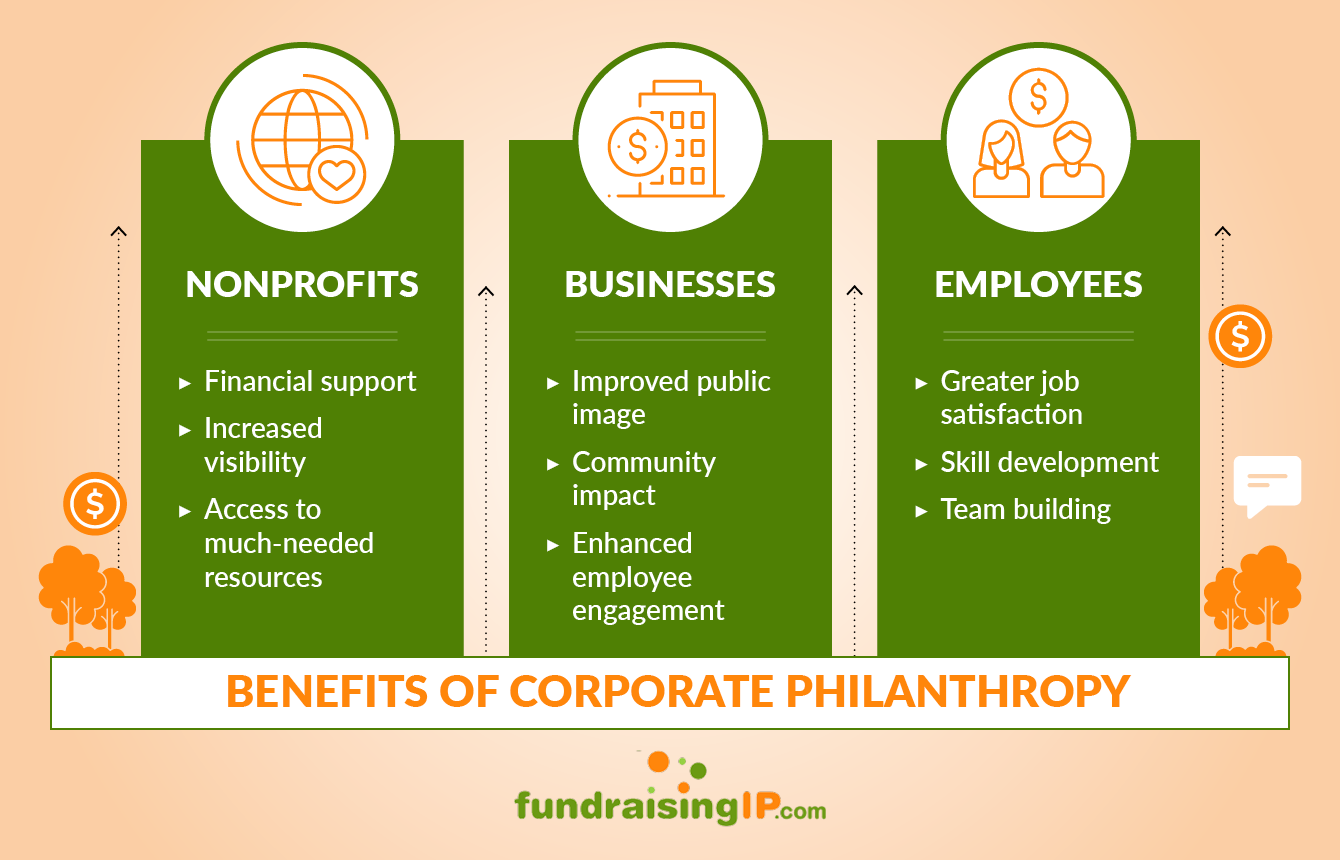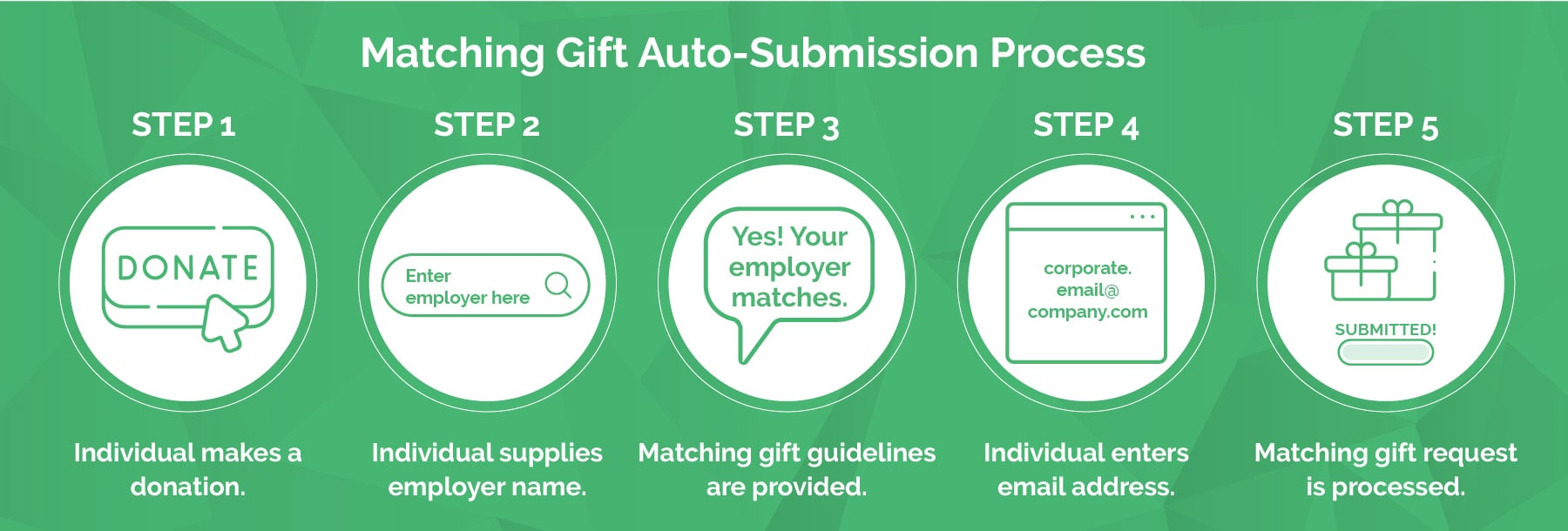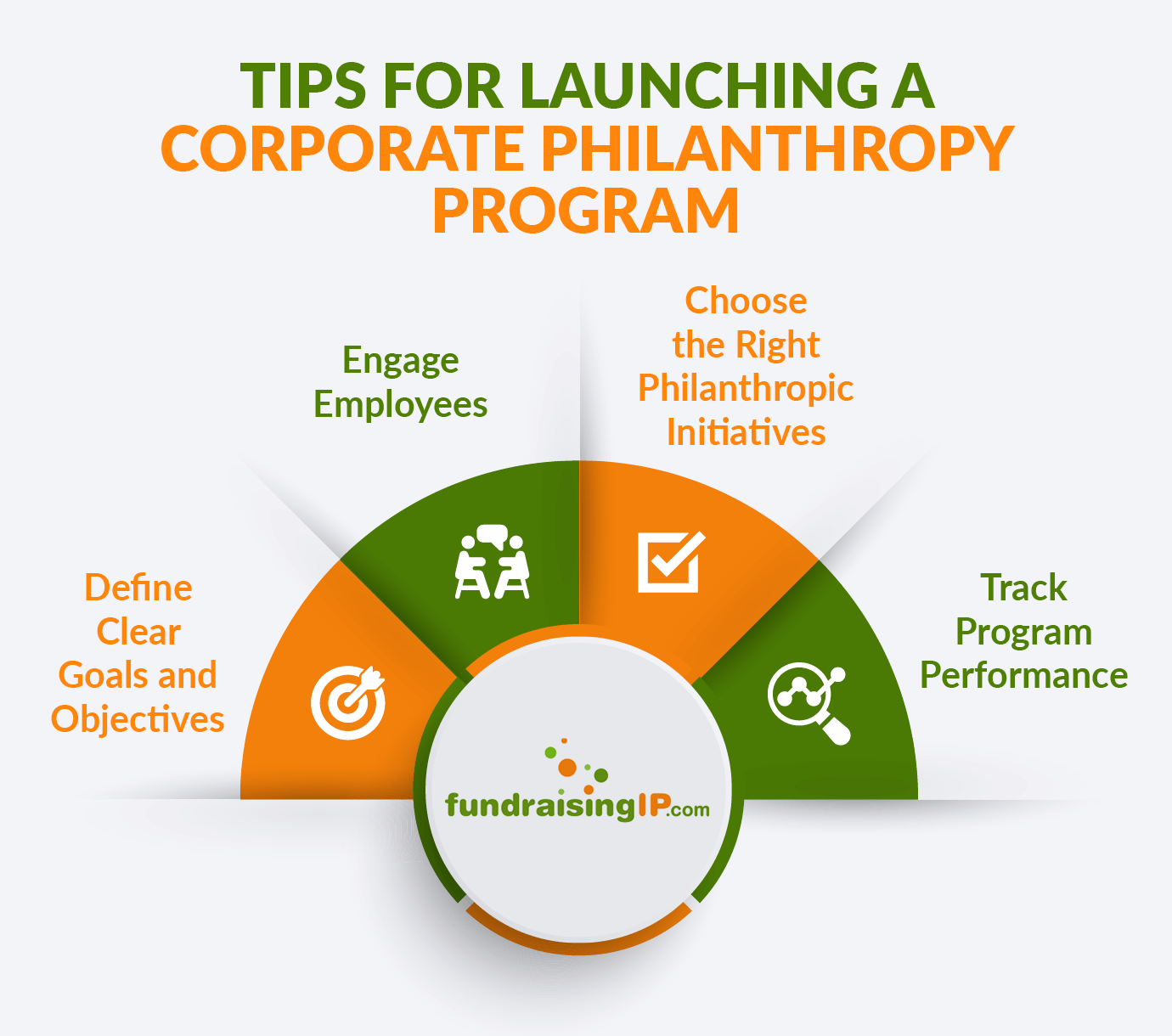Today, a company’s success is not only measured by its financial performance but by its commitment to making a positive impact on the world. This transformation in perspective has given rise to a powerful force: corporate philanthropy.
This guide is designed to be your compass in navigating the dynamic landscape of corporate social responsibility (CSR). From understanding the motivations behind corporate philanthropy to implementing impactful initiatives, these insights will help you create a legacy of positive change that extends far beyond the boardroom.
What is Corporate Philanthropy?
Corporate philanthropy is a business practice in which companies allocate a portion of their resources, such as money, goods, or services, to support charitable causes and organizations. It goes beyond profit-making and aims to address various social issues, contributing to the betterment of communities and the world at large.
Benefits of Corporate Philanthropy
Corporate philanthropy is beneficial for the businesses allocating resources, the employees participating, and the nonprofit receiving support. Explore the full list of benefits below:

For Nonprofits
Nonprofits actively seek involvement in corporate philanthropy for several reasons, including:
- Financial support: Corporate philanthropy can provide nonprofits with a valuable source of financial support. Through donations, grants, and sponsorships from businesses, nonprofits can secure the funding needed to carry out their programs and initiatives. This financial support allows nonprofits to expand their reach, develop new projects, and sustain their ongoing efforts to address critical societal issues.
- Increased visibility: When a well-known company aligns itself with a nonprofit’s mission, it can help raise awareness about the organization’s cause and activities. This increased visibility can attract more donors, volunteers, and supporters, ultimately amplifying the nonprofit’s impact.
- Access to resources: Many corporations offer more than just financial support. For instance, they may provide nonprofits with access to their skilled employees’ time and expertise. Additionally, businesses often have specialized knowledge and networks that nonprofits can tap into for guidance, mentorship, and collaboration.
To get involved in corporate philanthropy, nonprofits should actively seek partnerships with businesses, explaining how their support will contribute to positive social change.
For Businesses
In addition to contributing to a more prosperous and stable society, participating in corporate philanthropy can be a strategic investment for businesses, as it allows them to:
- Improve their public image: Customers and stakeholders tend to view businesses more favorably when they actively engage in social responsibility initiatives. In fact, 90% of companies indicate that partnering with reputable nonprofit organizations enhances their brand. This positive perception can lead to increased customer loyalty, trust, and brand affinity, which can, in turn, boost sales and customer retention.
- Make an impact on their communities: Businesses that support local nonprofits can strengthen their relationships with the communities in which they operate, leading to increased customer loyalty and support from local stakeholders.
- Increase employee engagement: Many employees value working for socially responsible companies. Therefore, participation in charitable initiatives can improve their morale, reduce turnover, and contribute to a positive work culture.
Although corporate philanthropy requires an investment of time and resources, the benefits far outweigh the costs. The goodwill generated through philanthropic efforts can lead to long-term business success and a more sustainable, socially responsible organization.
For Employees
Employees play a central role in corporate philanthropy, and as it turns out, they reap several benefits from their company’s commitment to social responsibility. These include:
- Increased job satisfaction: 63% of American employees prefer to work for a company that promotes social responsibility. Therefore, knowing that their work contributes to positive social change can be deeply fulfilling and motivating.
- Skill development: Corporate philanthropy can provide employees with valuable skill development and leadership opportunities. They may have the chance to take on new roles, such as organizing events or managing volunteer projects, which can be beneficial for personal growth and career advancement.
- Team building: Philanthropic activities like volunteer projects can foster teamwork and camaraderie among employees. This collaboration can improve internal communication, increase productivity, and enhance the overall workplace culture.
For the best results, ensure that employees feel empowered and comfortable advocating for the causes they care about. Regularly solicit input on which nonprofits the company should support or how to improve its philanthropic efforts.
5 Types of Corporate Philanthropy
Corporate philanthropy can take various forms, including:
1. Matching Gifts
Matching gifts are one of the easiest ways to get involved in corporate philanthropy. Under these programs, a company agrees to financially match the charitable contributions made by its employees to eligible nonprofits. 91% of companies match donations at a 1:1 ratio. However, some companies will triple or even quadruple their employees’ donations.
The best way to understand matching gifts is to walk through an example: Imagine a donor has just given a nonprofit a $100 donation. That donor works for a company with a 1:1 match ratio, meaning the employer will donate exactly what the employee has given. For this particular donation, after the donor submits the request, the nonprofit will have received $100 from the donor plus $100 from the company, for a total of $200.
To start a matching gift program or amplify your existing one, businesses can take several strategic steps. First, it’s crucial to assess the company’s capacity and budget for matching contributions. Determine the matching ratio and any maximum limits per employee or per donation. Then, clearly communicate the matching gift program to employees, emphasizing its importance in the company’s philanthropic efforts and highlighting the ease of participation. Utilize various communication channels, including email, company intranet, and employee meetings, to promote awareness.
To maximize the number of matching gifts your organization receives, it’s key to invest in matching gift software that makes the process as easy as possible for donors to submit matching gift requests. Through powerful integrations with CSR software providers, Double the Donation’s matching gift tool offers auto-submission capabilities that drastically reduce the number of steps donors have to take to submit a matching gift request.
Without auto-submission, donors have to determine their eligibility, visit their employer’s match portal, search for the nonprofit they donated to, and fill in details about their donation to submit their match request. However, auto-submission streamlines this process into the following simple steps:

Auto-submission makes the matching gift process as easy as possible for donors. When they no longer have to fill out several information fields and navigate to different web pages, they’re more likely to follow through with submitting a match request.
2. Dollar for Doers
With Dollars for Doers programs, employers grant funds to the nonprofits that their employees volunteer with. Usually, the program guidelines will be broken into tiers based on hours volunteered. For instance, one company may specify that 25 hours equate to a $400 grant and 50 hours equate to a $1,000 grant.
There are some common restrictions for volunteer grants. Typically, the programs will stipulate that an employee:
- Can only receive a grant for one nonprofit per year
- Can only earn money up to a certain yearly grant amount limit
The benefits for nonprofit recipients are two-fold: the nonprofit receives access to an active volunteer base and funding. It’s a win-win.
3. Volunteer Support Programs
In addition to financially matching their staff’s volunteer hours, businesses often provide regular volunteer support to nonprofits. The two most common forms of corporate volunteering include:
- Skilled volunteerism: Share your professional expertise, knowledge, and skills with nonprofits to help them operate more efficiently. Depending on your industry vertical, this support may include legal advice, financial consulting, marketing and communications assistance, IT support, graphic design, or project management.
- Hands-on volunteer activities: Organize and encourage employees to participate in hands-on volunteer activities that directly benefit nonprofits and their communities. This may involve building homes, organizing food drives, cleaning up public spaces, mentoring and tutoring youth, or any other activity that allows employees to lend their support.
To increase involvement, consider allowing employees to participate in these activities during their normal work hours. Establish clear guidelines outlining how much paid time off employees can use for volunteering during an average work day or quarter. Then, implement tracking mechanisms for employees to request volunteer time, ensuring transparency and accountability.
4. In-Kind Contributions
In-kind donations are a valuable component of corporate philanthropy, as they provide nonprofits with tangible assets. For example, a technology company might donate free software to a school, or a bakery might give unsold bread to a food bank.
As you prepare your in-kind donations, ensure that you:
- Understand the nonprofit’s needs and preferences. Before donating in-kind contributions, take the time to understand the specific needs and preferences of the nonprofit organizations you wish to support. Reach out to the nonprofits directly to discuss their current priorities and requirements. This proactive approach ensures that your donations align with their mission and actually contribute to their work.
- Maintain quality assurance. Ensure that the in-kind contributions you provide are of high quality and directly relevant to the nonprofit’s activities. Consider how your products or services can best support their programs and beneficiaries. Avoid donating items that are outdated, damaged, or unsuitable for their purposes, as this can burden nonprofits with disposal costs.
When a business donates goods or services to a qualified nonprofit, it may be eligible for a tax deduction based on the fair market value of the item, subject to specific IRS guidelines. It’s essential to keep detailed records of the donated items, their fair market values, and any receipts or acknowledgment letters from the nonprofit to substantiate the deductions. If you need assistance evaluating the value of your in-kind donations, consult with tax professionals or accountants.
5. Cause Marketing
Cause marketing is a strategic partnership in which businesses align their products or marketing campaigns with a charitable cause. A portion of the proceeds from the sale of specific products may be donated to the charity, or the company may use its marketing platform to raise awareness for a particular issue.
For a cause marketing campaign to be successful, it’s important to:
- Find a nonprofit partner. Identify a reputable nonprofit that is actively involved in the chosen cause and has a track record of positive impact. Establish a clear partnership agreement that outlines the roles, responsibilities, and expectations of both parties. Ensure transparency in how marketing will be used to support the cause.
- Develop a marketing strategy. Collaborate with the nonprofit to create a cause marketing campaign that effectively communicates the partnership and its objectives. Plan how you will integrate the cause into your marketing and advertising efforts, using various channels like social media, email marketing, or in-store promotions.
- Set donation mechanisms. Determine how your business will contribute to the cause, whether it’s through a percentage of sales, a fixed donation per product sold, or a one-time contribution. Clearly communicate the terms of the donation to customers and employees, emphasizing the positive impact their support will have on the chosen cause.
Let’s say a clothing retailer partners with a nonprofit focused on promoting education in underserved communities. In this cause marketing campaign, for every school-themed clothing item purchased during the back-to-school season, the retailer commits to donating a set amount to the nonprofit’s education initiatives.
The retailer promotes the campaign through in-store displays, online advertising, and social media, emphasizing the positive impact of each purchase. Customers who participate in the campaign not only get stylish clothing but also feel good knowing that their purchase directly makes an impact on underprivileged children.
Tips for Launching a Corporate Philanthropy Program
Launching a corporate philanthropy program can be a transformative step for a business wanting to enhance its reputation, boost employee engagement, and drive social impact. Here are four essential tips to consider when starting a corporate philanthropy program:
1. Define Clear Goals and Objectives
Before launching a corporate philanthropy program, define clear and measurable goals. Ask yourself what you aim to achieve through your philanthropic efforts. For example, are you focused on supporting specific causes, improving your local community, or engaging employees? By setting concrete objectives, you can tailor your program to meet those goals and evaluate its impact effectively.
2. Engage Employees
Employee engagement is a key driver of corporate philanthropy. Not only do engaged employees contribute to the program’s success, but they also derive a sense of purpose and satisfaction from being part of a socially responsible company. Consider creating a dedicated philanthropy committee composed of employees from various departments and empowering them to identify charitable causes, plan and organize volunteer events, and promote giving initiatives within the organization.
Then, recognize their contributions through awards, certificates, or regular updates in company communications. Highlighting individual and team achievements will inspire others to get involved.
3. Choose the Right Philanthropic Initiatives
Selecting the right philanthropic initiatives is critical. Align your program with causes that resonate with your company’s values and interest your employees and customers. Whether you support local charities, environmental sustainability projects, education initiatives, or global humanitarian causes, focus on long-term commitments to maximize the impact of your contributions and build lasting relationships with beneficiaries.
4. Track Program Performance
To ensure the success and impact of your corporate philanthropy program, it’s crucial to establish clear performance metrics and evaluation systems from the outset. Define key performance indicators (KPIs) that align with your program’s goals, such as the number of volunteer hours contributed, the amount of donations made, or the specific outcomes you aim to achieve in the community. Use your CSR software to track these metrics and report on your program’s effectiveness.
Implementing CSR software can also help you improve one of the top corporate philanthropy metrics to track: return on investment (ROI). To ensure your program delivers value for both your company and its stakeholders, your corporate philanthropy methods must generate a positive ROI. Through the following benefits, CSR software helps companies achieve a higher ROI with their philanthropic endeavors:
- Better efficiency. When you use CSR software to organize your program and all relevant data, you reduce the amount of time needed for corporate philanthropy management. As a result, you can focus more energy on revenue-generating initiatives.
- Enhanced reporting. As mentioned above, CSR software can help you track and report on key metrics. You can then analyze this data and use it to adjust your approach in the future, allowing you to continuously improve the effectiveness of your efforts.
- Higher stakeholder engagement. CSR software makes it easier to communicate with a variety of stakeholders, including employees, customers, investors, and your local community. This communication can strengthen your stakeholder relationships and ultimately increase revenue.
- Risk avoidance. Your CSR software may catch risks related to compliance, reputation, and sustainability that you may not have noticed on your own. You can then act on these risks and avoid potential financial losses in the process.
While you may not be able to pin down the ROI of your CSR software the same way you can track quantifiable outcomes like the amount of funds raised, this tool can set your philanthropy program on the right track and improve its effectiveness.
A Final Note About Corporate Philanthropy
Remember, an investment in corporate philanthropy is an investment in your company’s future. To remain relevant and reputable, make a commitment to social responsibility today.
For more information on corporate philanthropy, check out these resources:
- Q+A with the Experts: Matching Gifts and Higher Education. Explore the importance of centering your philanthropic efforts on higher education.
- How To Kick Off A Workplace Giving Program At Your Company. Learn how to start a corporate philanthropy program from scratch in seven easy steps.
- Corporate Giving Vendors + Their Importance in Fundraising. Determine which corporate giving vendors (CSR software providers) are the right fit for your company.


